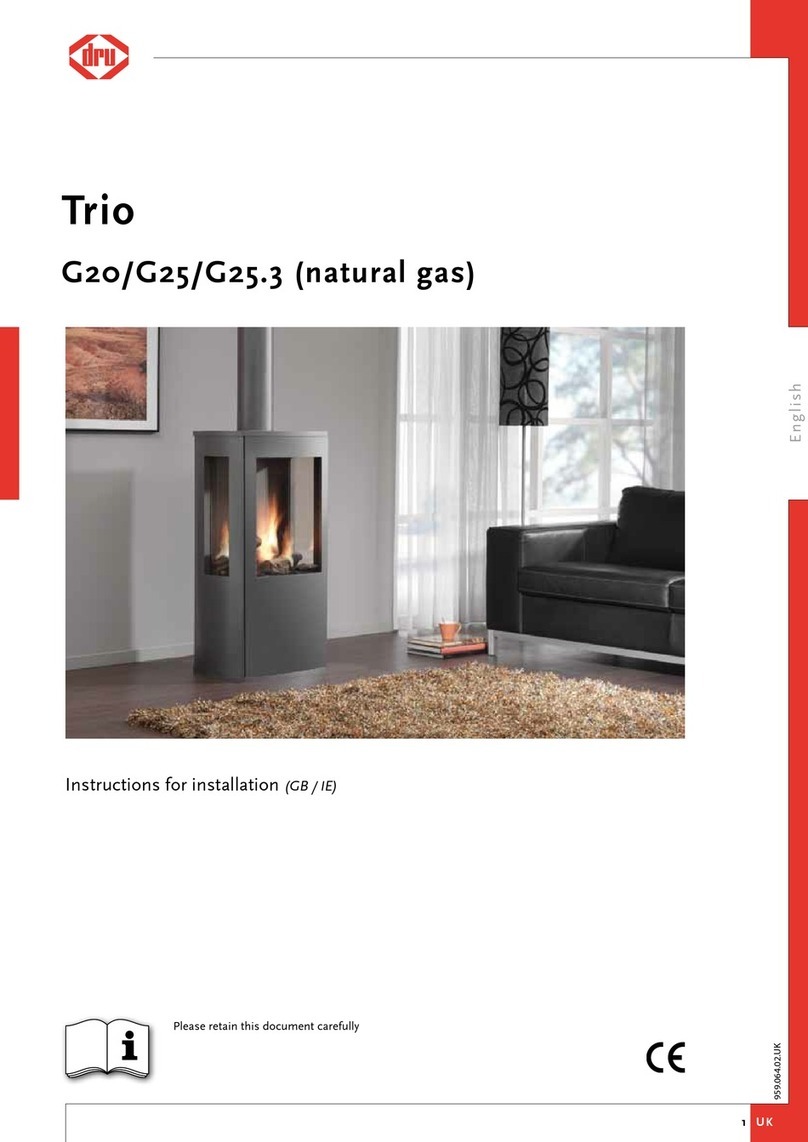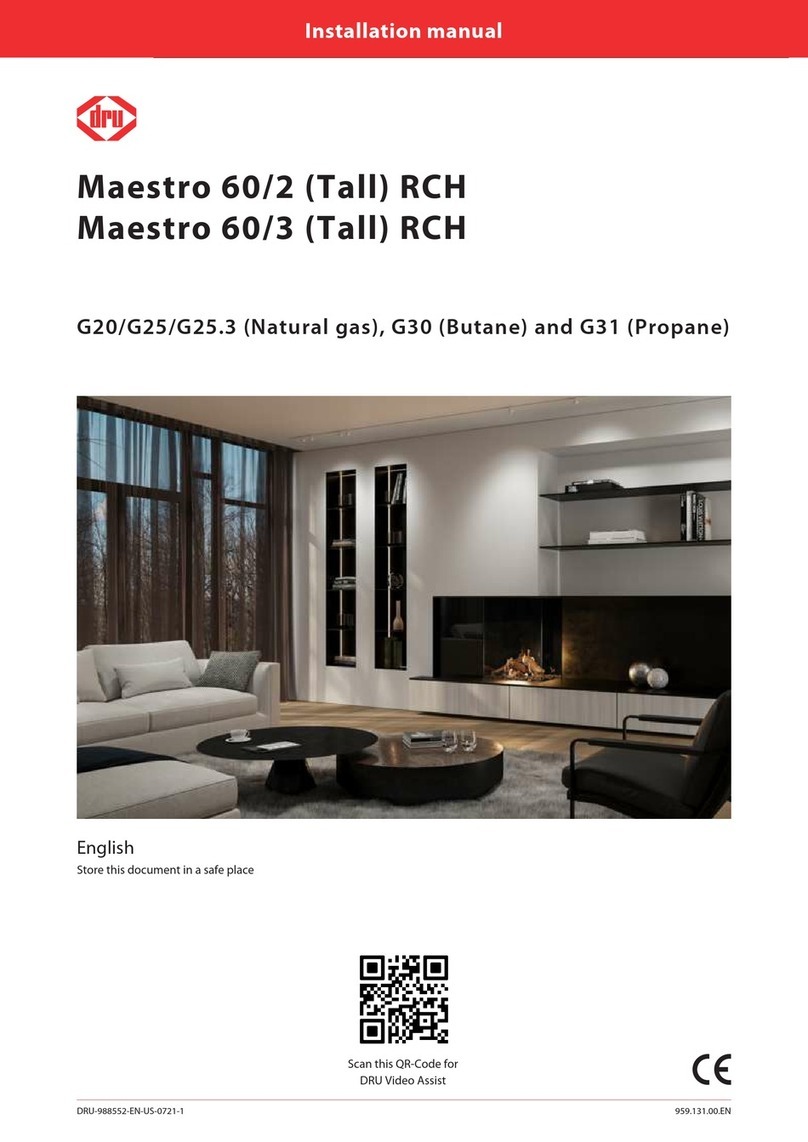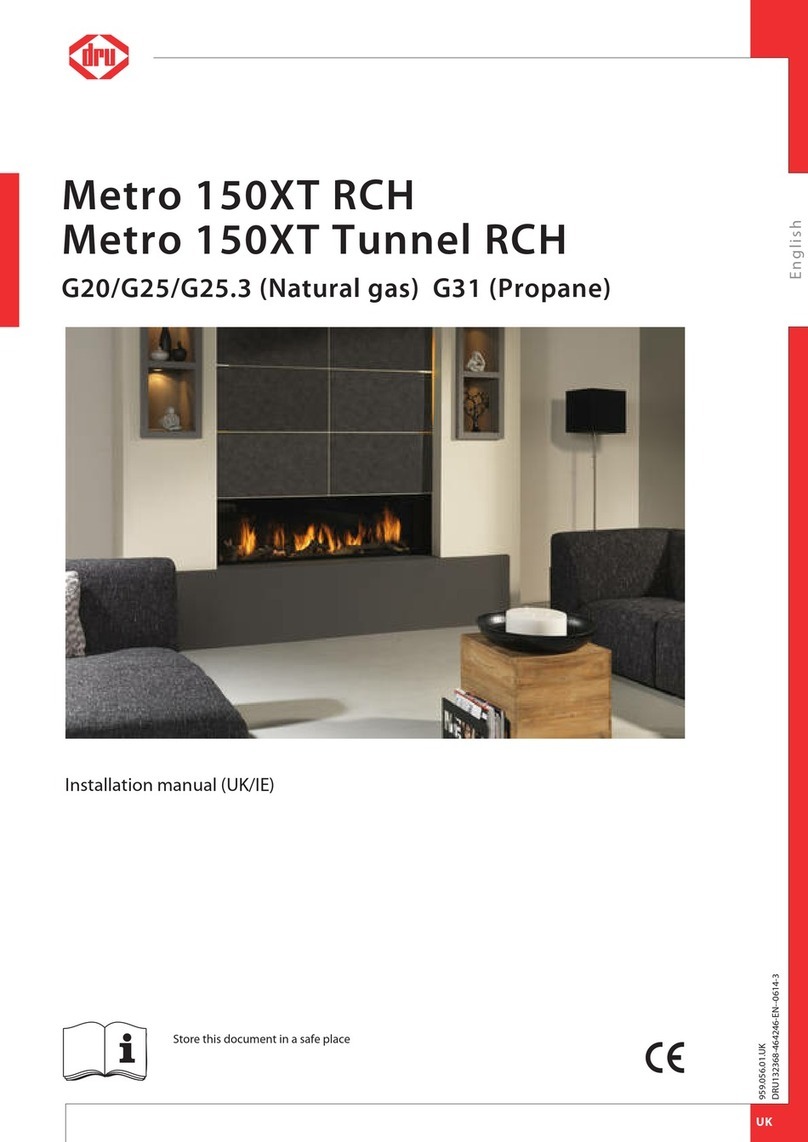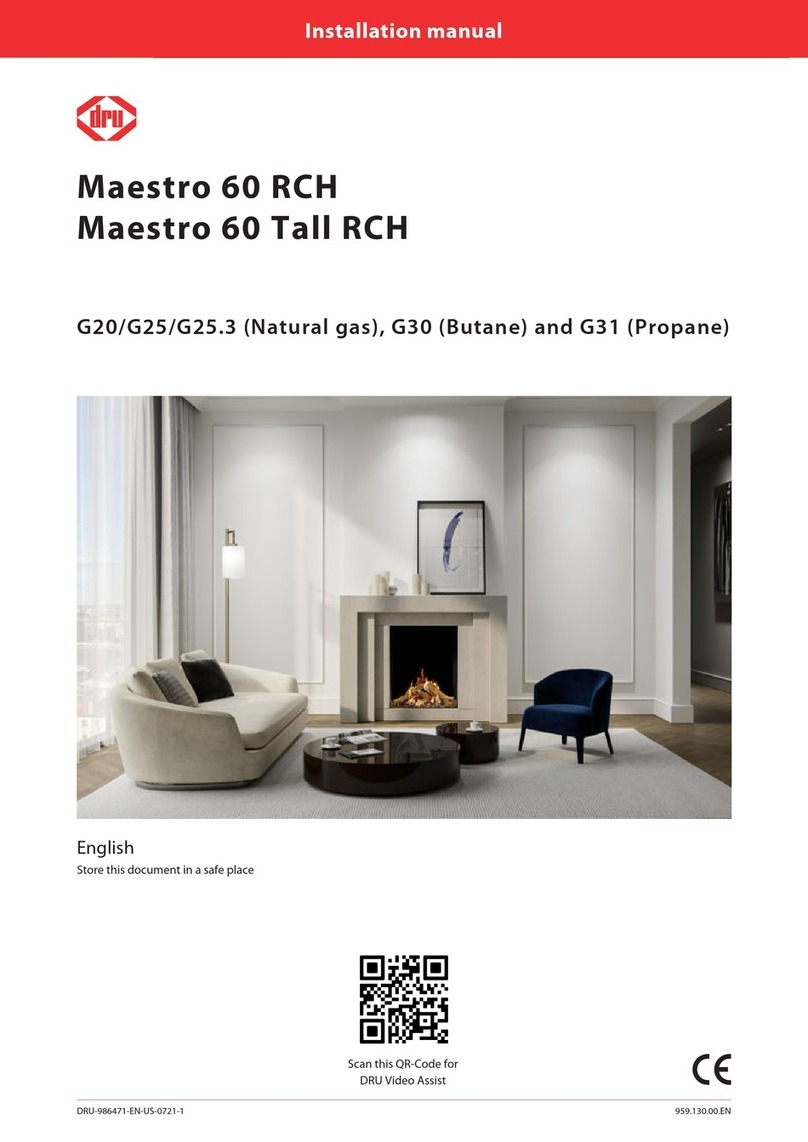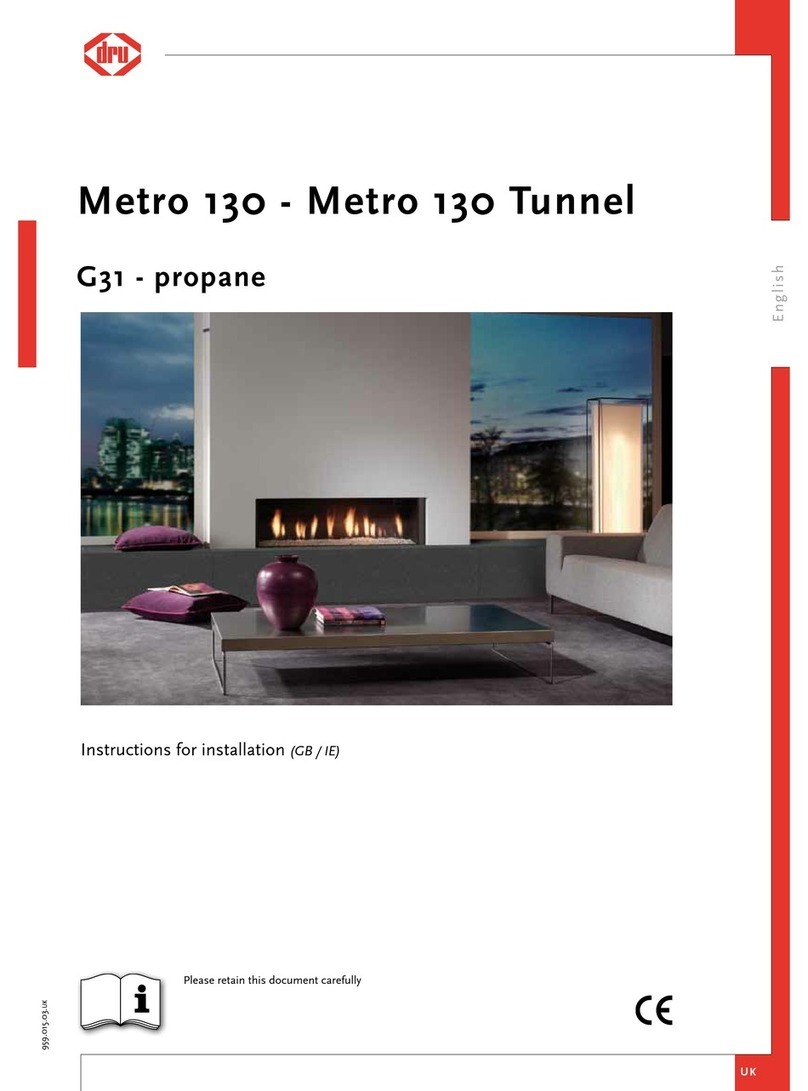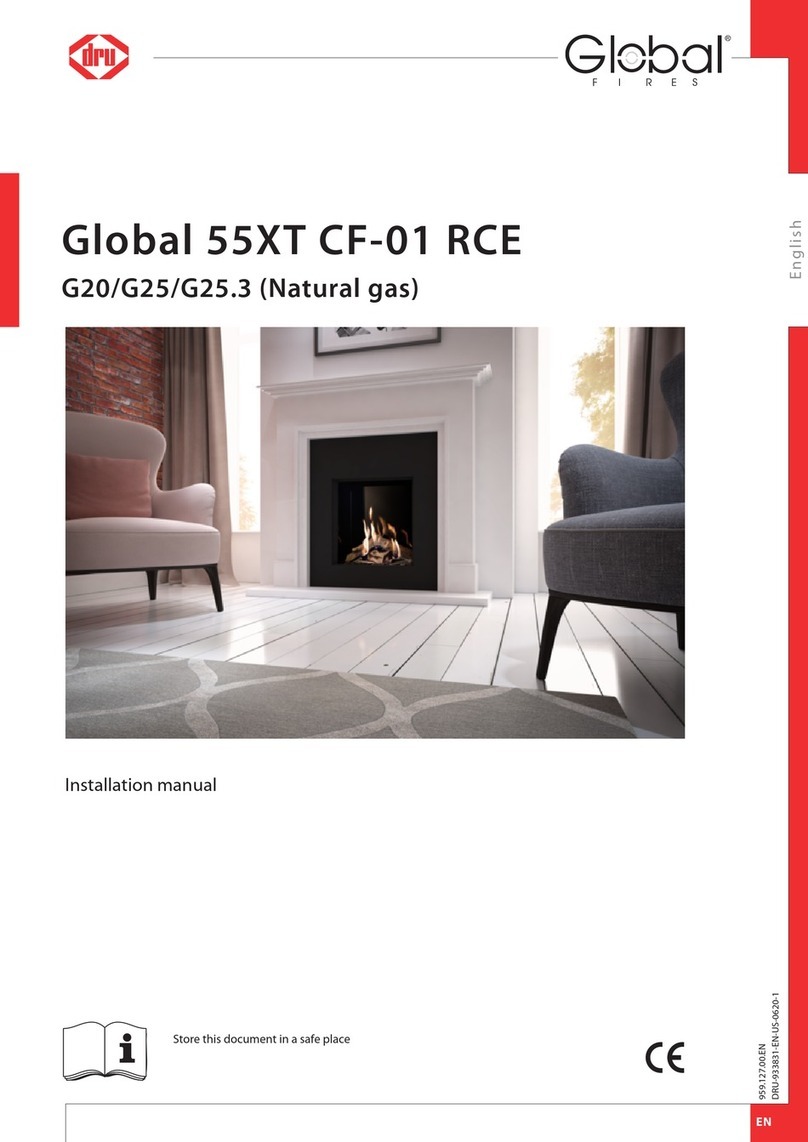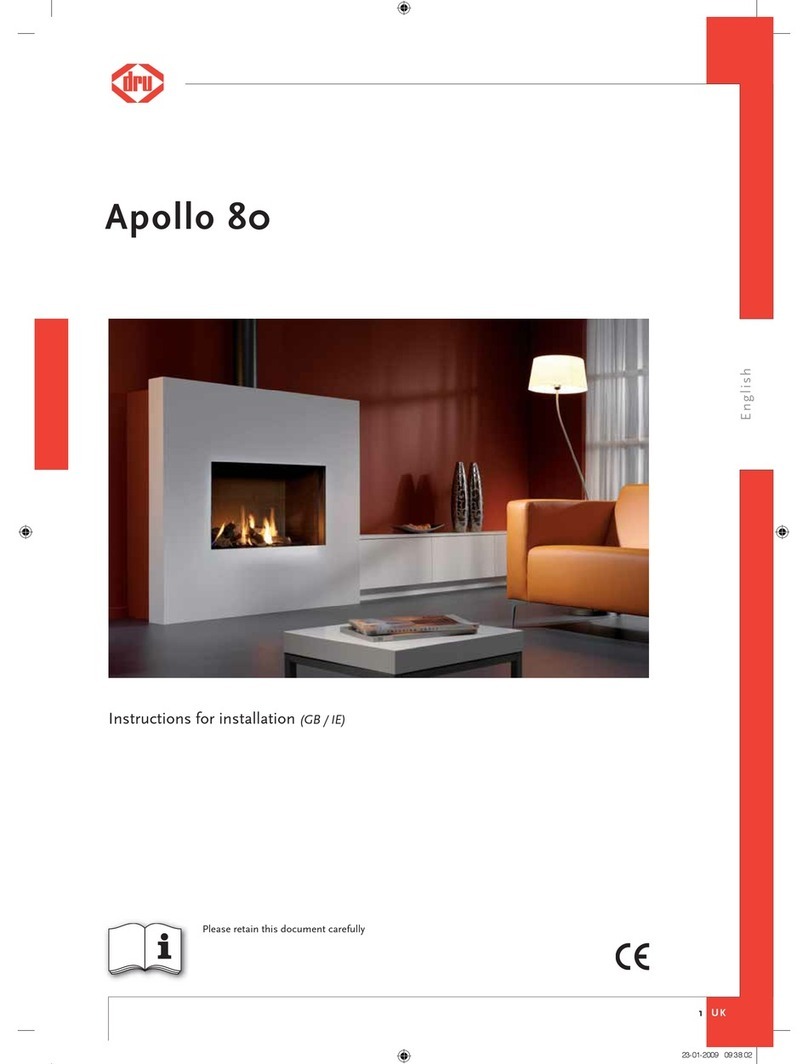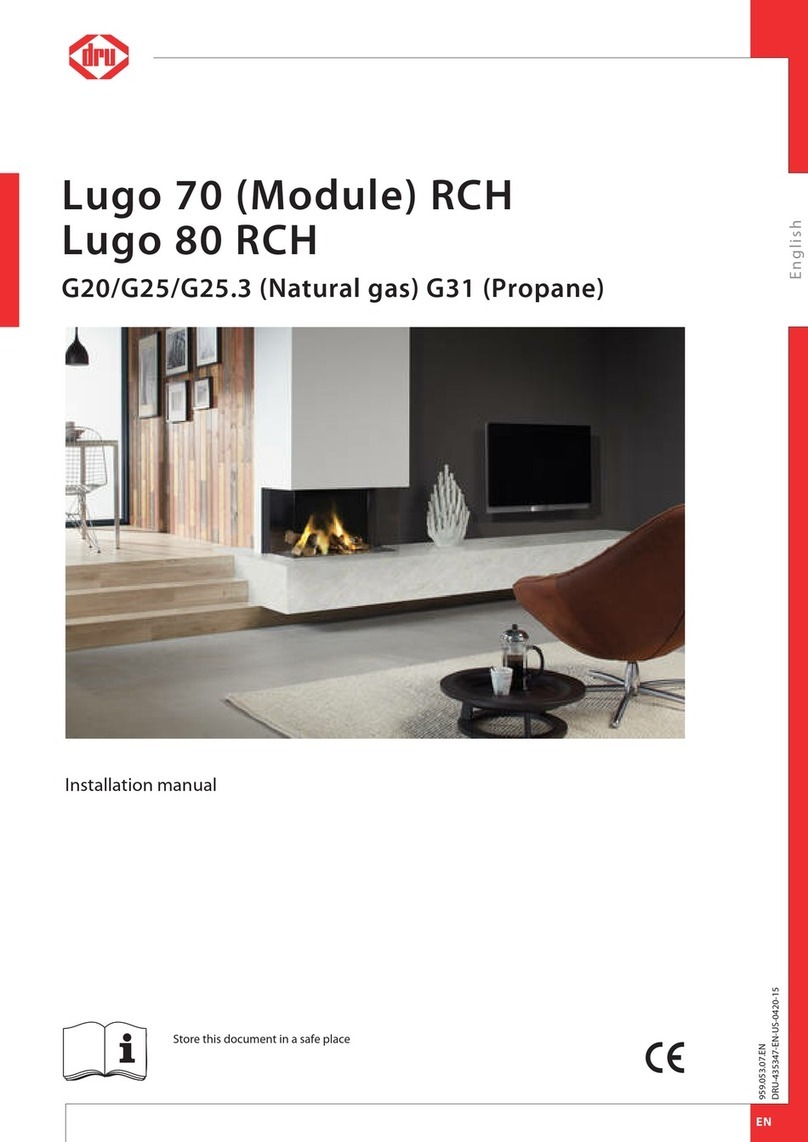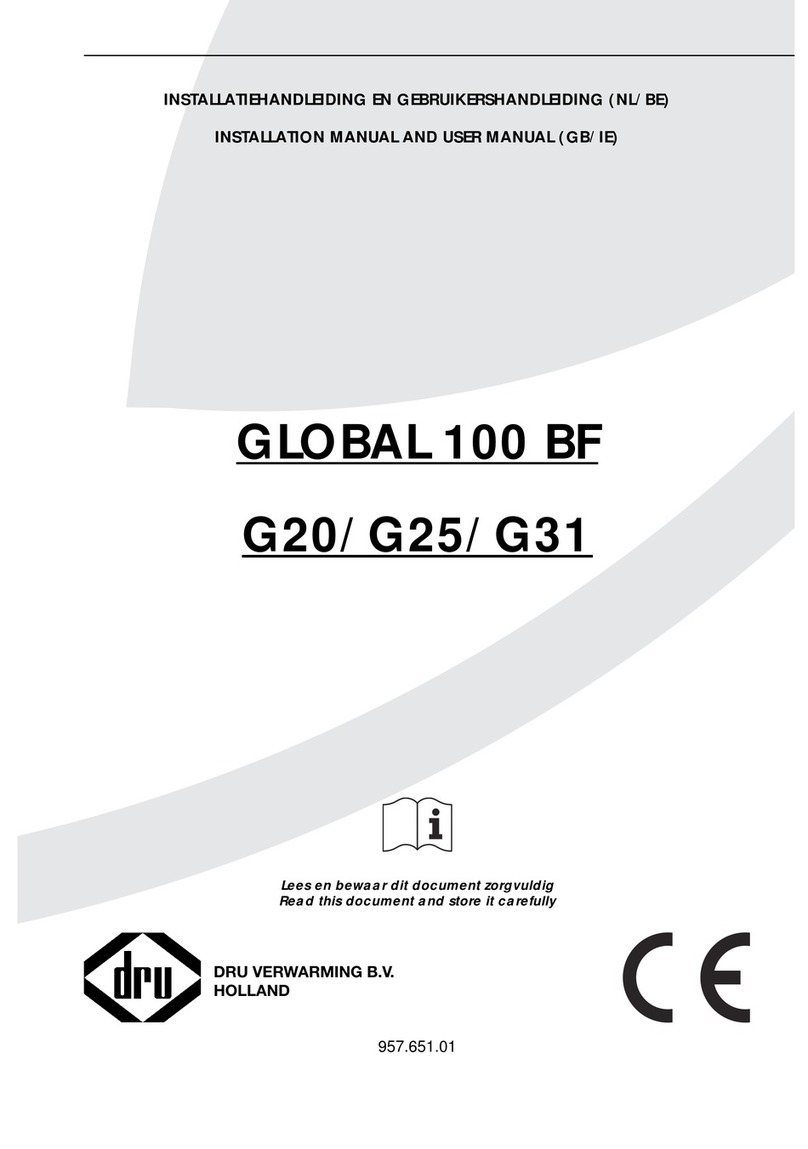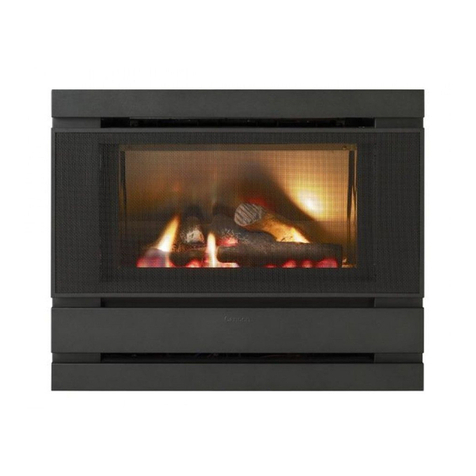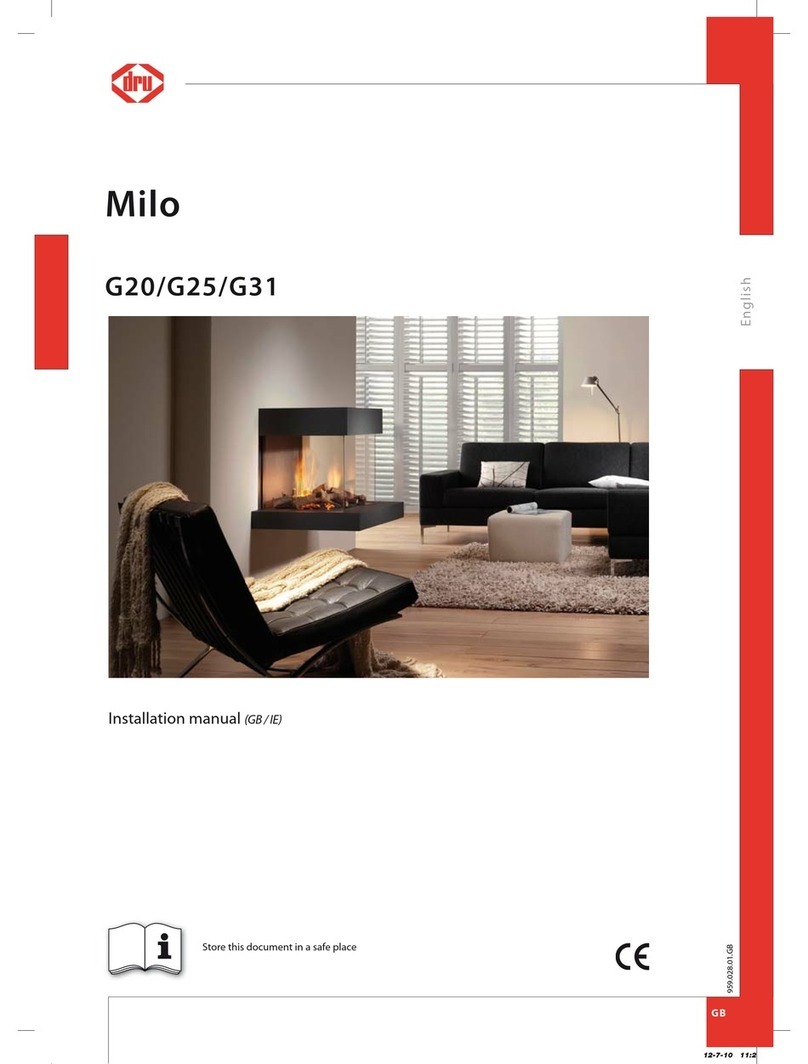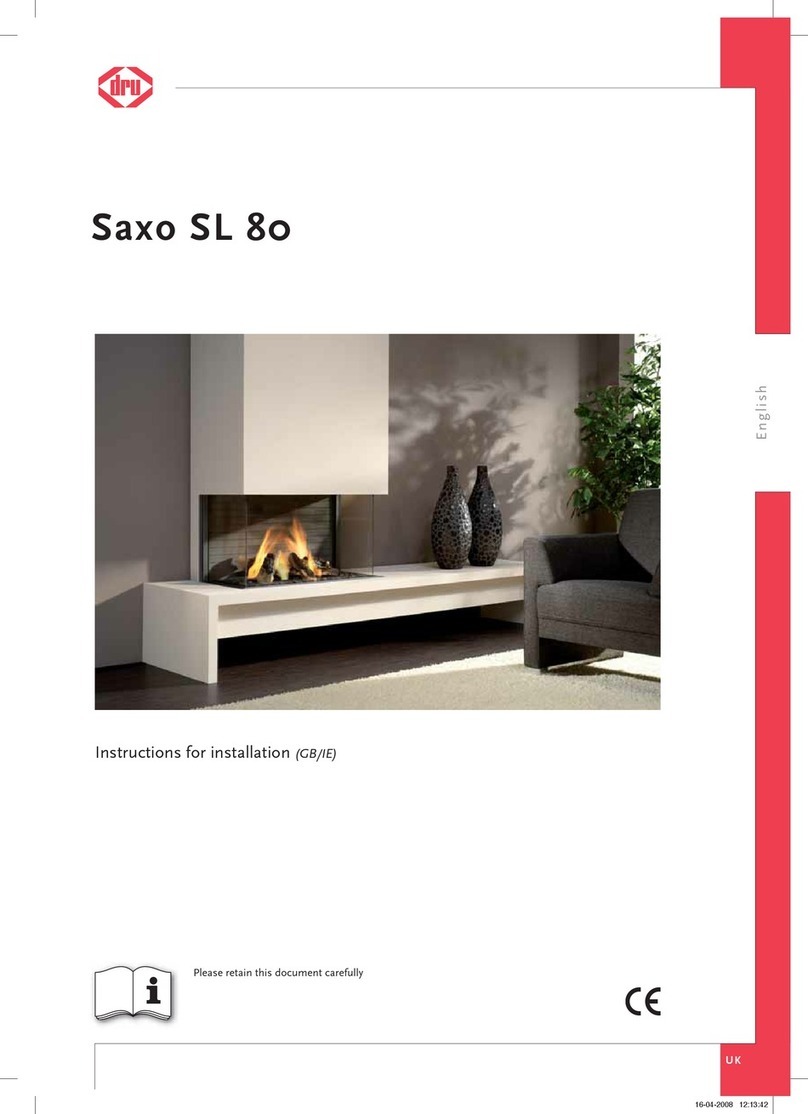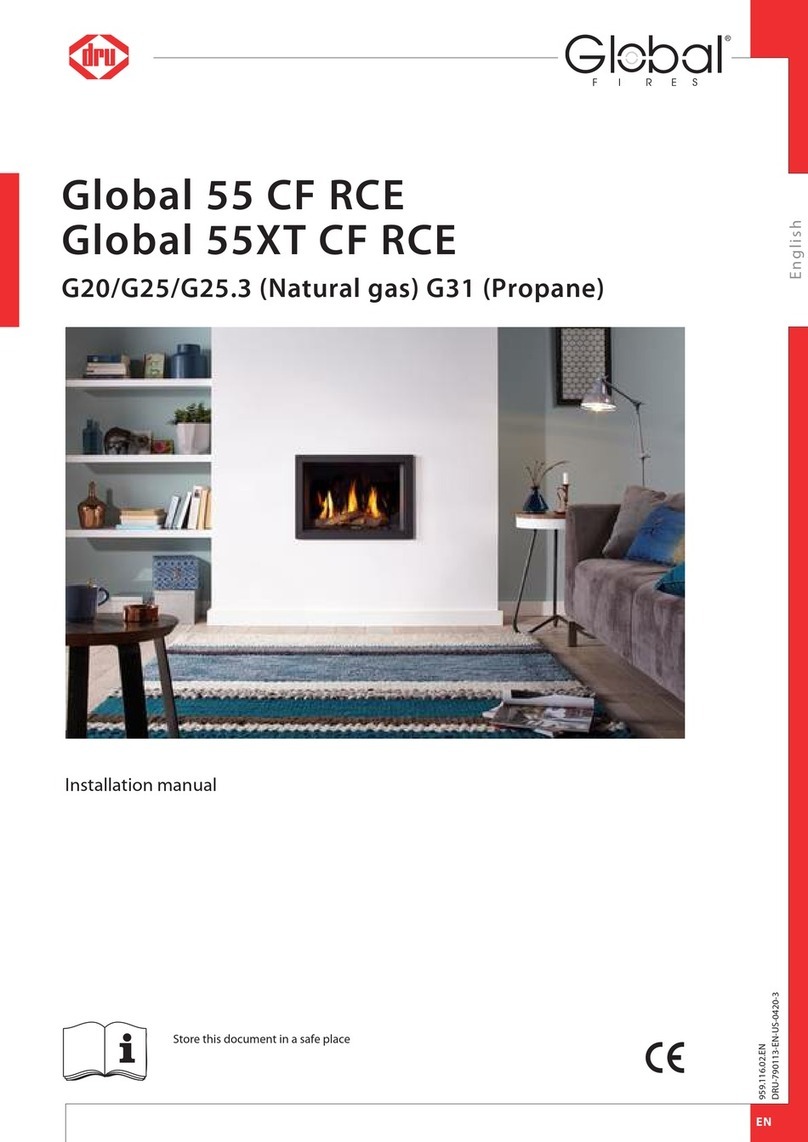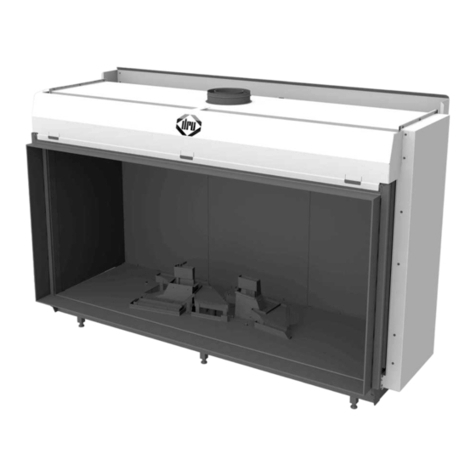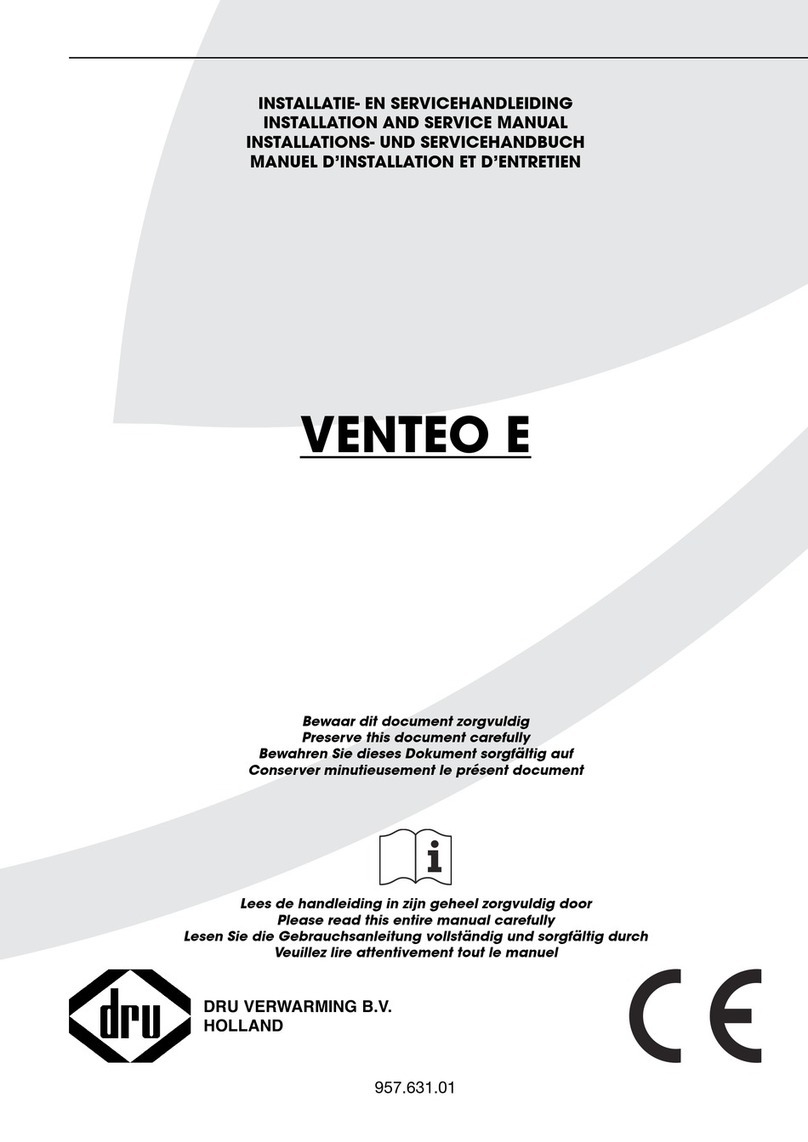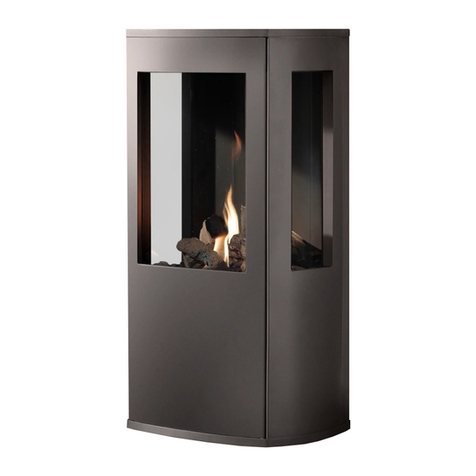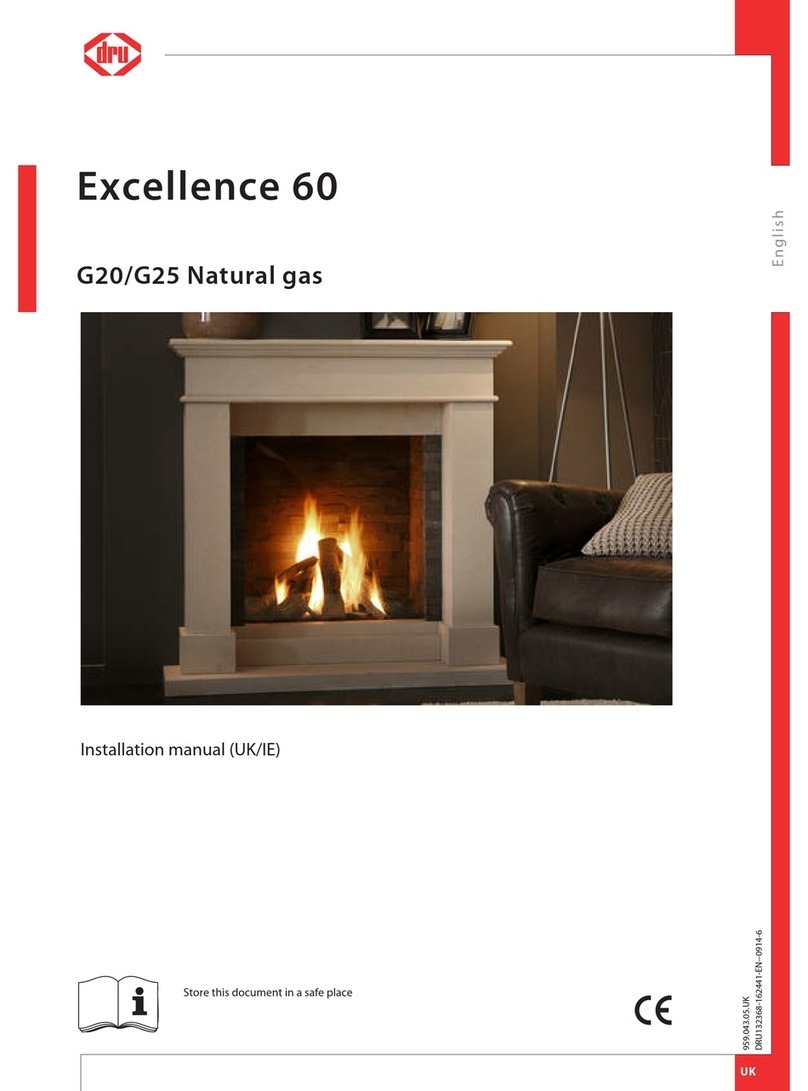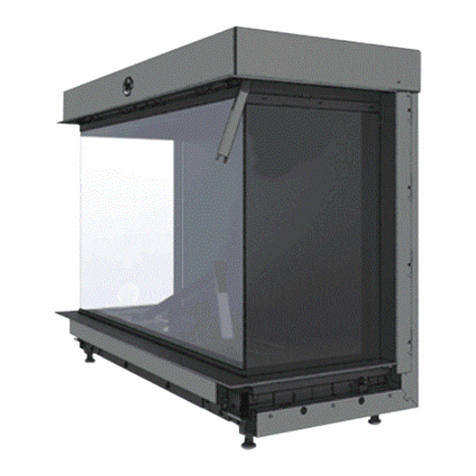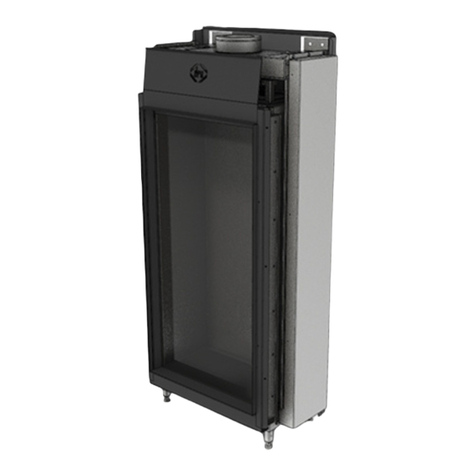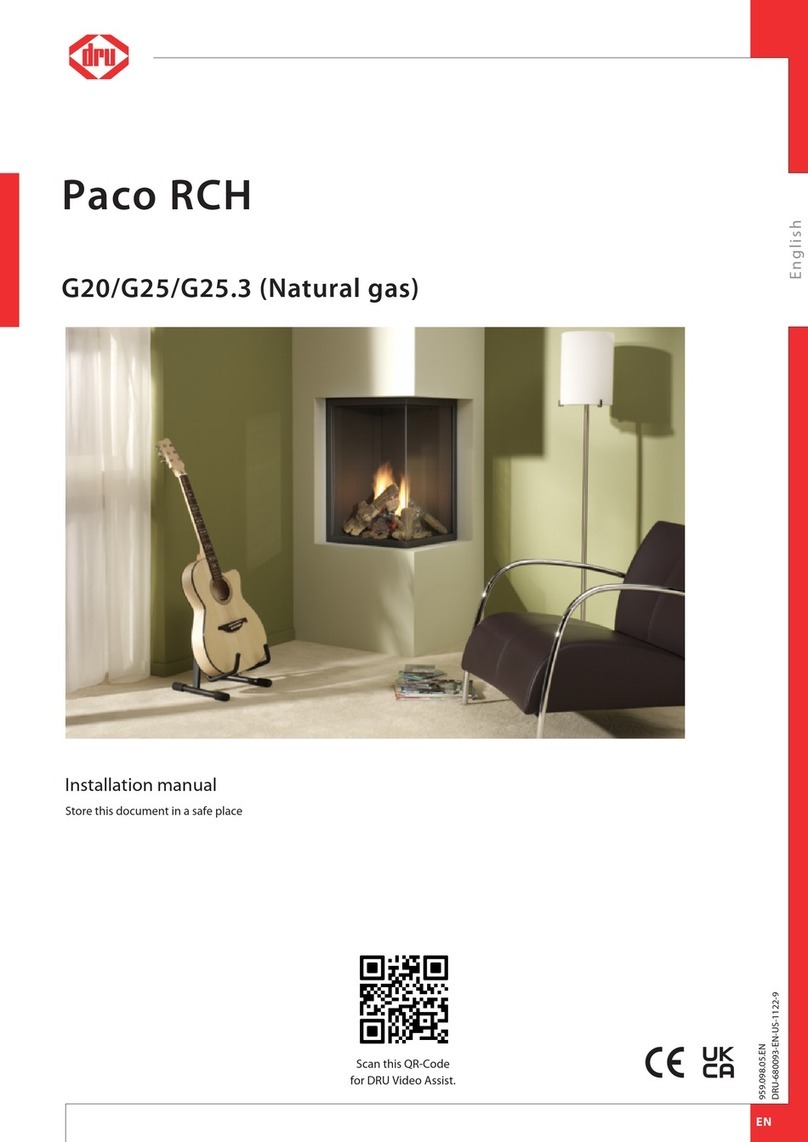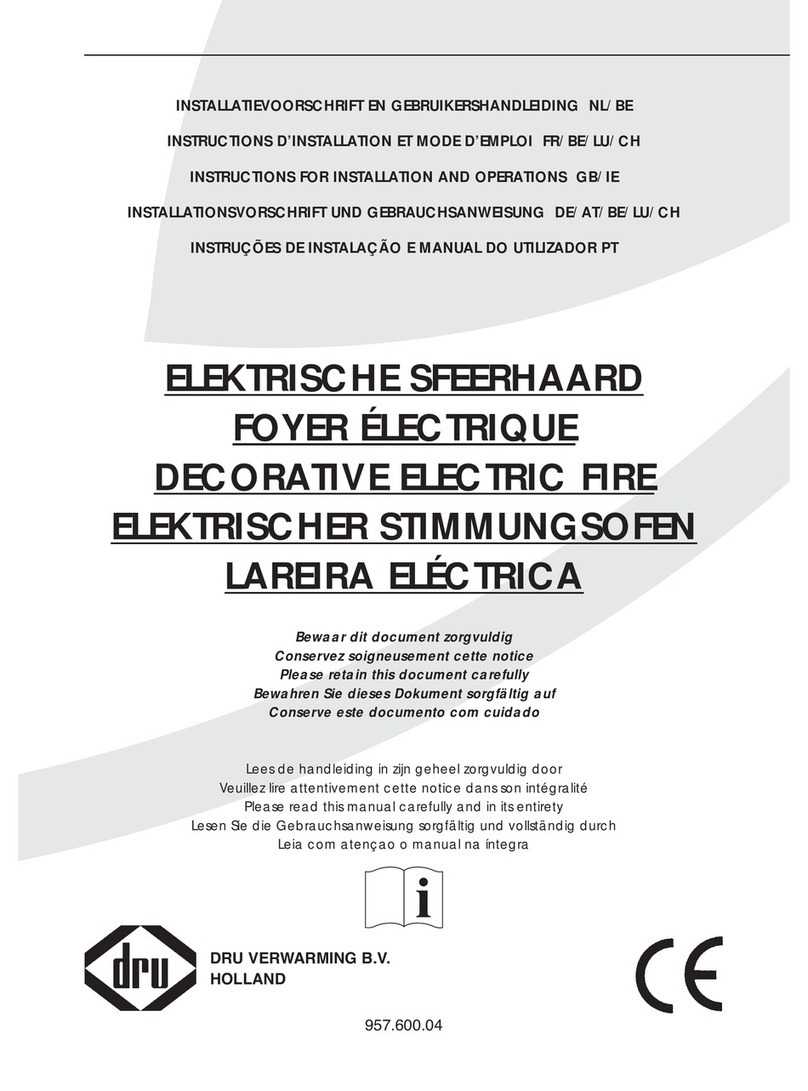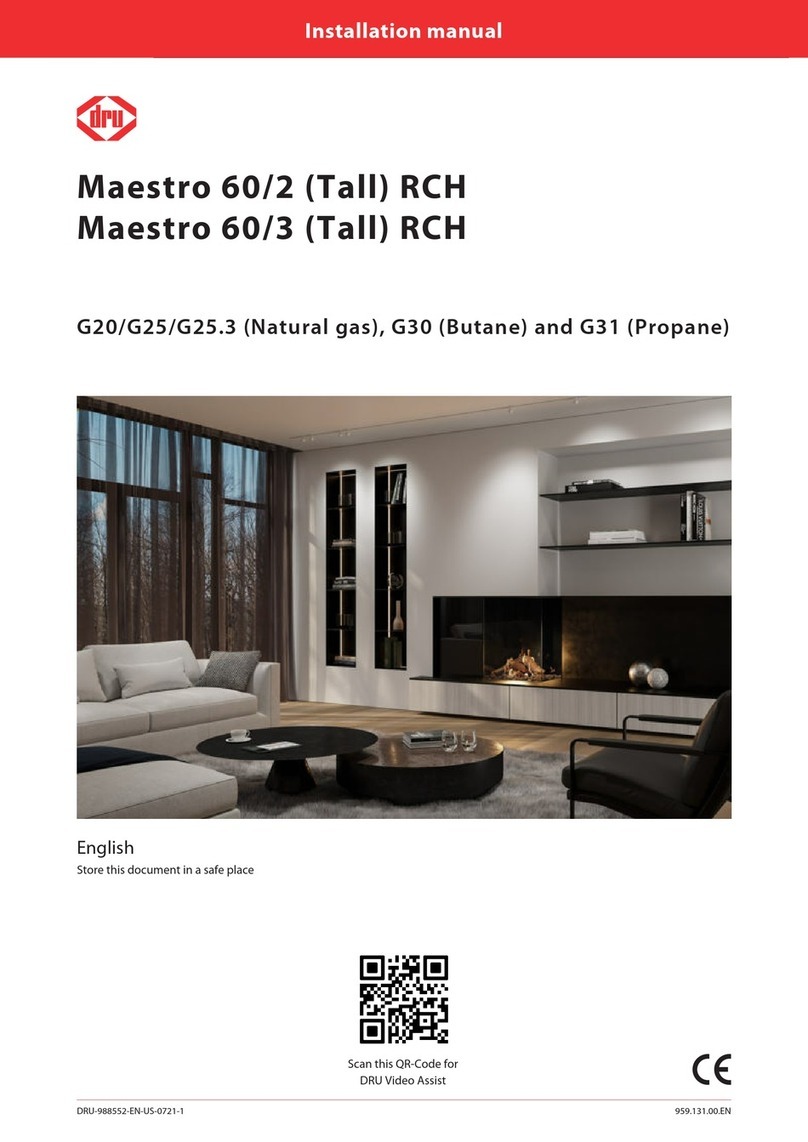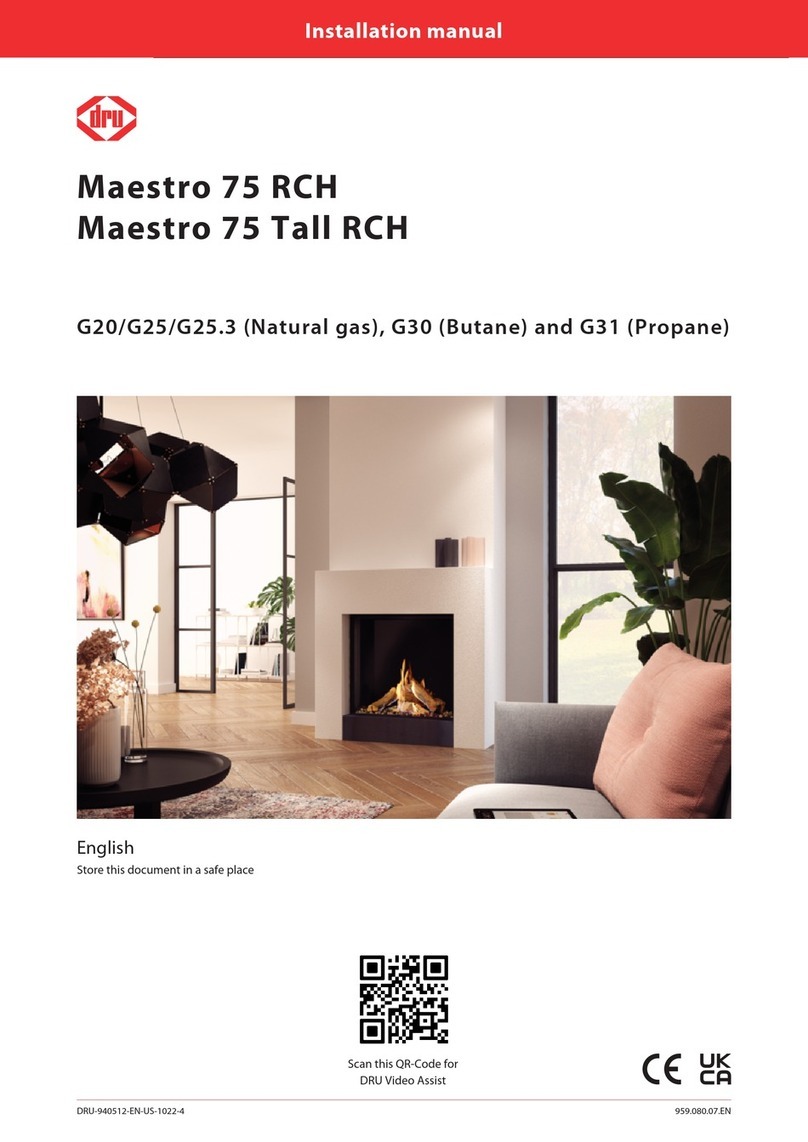
English
INSTALLATION MANUAL
!Caution
• Use non combustible and heat-resistant materials for the chimney breast including the top of the chimney
breast, the material in the chimney breast and the back wall of the chimney breast;
• Make sure the appliance is not carrying the weight of the chimney breast when using stone-like materials;
• The passage of the ventilation holes (outgoing), which are placed as high as possible, is stated in Appendix 2,
Table 2.
!Caution
When placing the chimney breast, you should take the following into account (see Appendix 3, Fig. 2):
• The location for the control hatch: this must be placed as low as possible;
• The dimensions of the control hatch; see Placing the control hatch section 5.7;
• The Dru control hatch is not supplied with all appliances. Nevertheless, we recommend only using a Dru
control hatch, if available, except in the case of B 11 AS/BS appliances. If you decide not to take this option, you
will have to make a 100 cm
2 ventilation hole that is placed as low as possible, for the benefit of the incoming
ventilation.
• The location of the ventilation holes (V) (outgoing);
• Maintain a minimum 30 cm distance between the top of the ventilation hole (outgoing) and the ceiling of the
house;
• The measurements of the glass pane, so that it can be placed/removed after placing the chimney breast;
• The protection of the gas control and the pipes against cement and plaster.
• If possible, you should place decorative strips, frames, etc., after any required structural work has been
completed. Avoid the use of painter's tape. If this is not possible: please use good quality painter's tape and
remove it immediately after plastering or painting work has been completed.
!Tip
You should preferably apply the ventilation holes (outgoing) on both sides of the chimney breast. You can use
DRU ventilation elements.
Prior to completely closing the chimney breast, check:
• whether the discharge / concentric system is placed correctly;
• whether the channels, fixing brackets and possible clip bindings, which cannot be reached after installation,
are fastened by means of self-tapping screws.
Ø
If applicable, do not plaster on or over the edges of the construction frame, because:
• the heat of the appliance could cause cracks;
• it will no longer be possible to remove/place the glass pane.
Ø
When using stone-like materials and/or plaster finishing, allow the chimney breast to dry for at least six weeks
prior to taking the appliance into operation in order to prevent cracks.
5.7 Placing the control hatch (if applicable)
The control hatch (also see paragraphs 5.5 and 5.6) is placed as low as possible in the chimney breast.
!Caution
• The bottom of the control hatch may not be placed higher in the appliance than the burner surface.
• Place control hatch and bracket with gas control and accessories indoors in a dry place only!
A number of components are placed in the control hatch, such as data plate, gas control, receiver belonging to the
remote control and, if applicable, the components belonging to the DRU Powervent System®.
Place the control hatch as follows, see Appendix 3, Fig. 3 for details:
Ø
Make an opening in the chimney breast, as described in the manual for the control hatch.
!Tip
The opening in the chimney breast may be made horizontal and vertical.
Ø
Place the inner frame (A); unscrew bolts (D and F) for this.
!Caution
• The inner frame should be placed in the correct way. Two positions are possible. Placing the inner frame with
a rotation of 180° is not allowed (see Appendix 3, fig. 4).
!Tip
• When the chimney breast is made of bricks, the inner frame can be built with bricks at the same time;
• When using a different material, you can glue the inner frame or fix it with four flush screws.
Ø
Remove the bracket with the components (B) from the appliance.
UK
